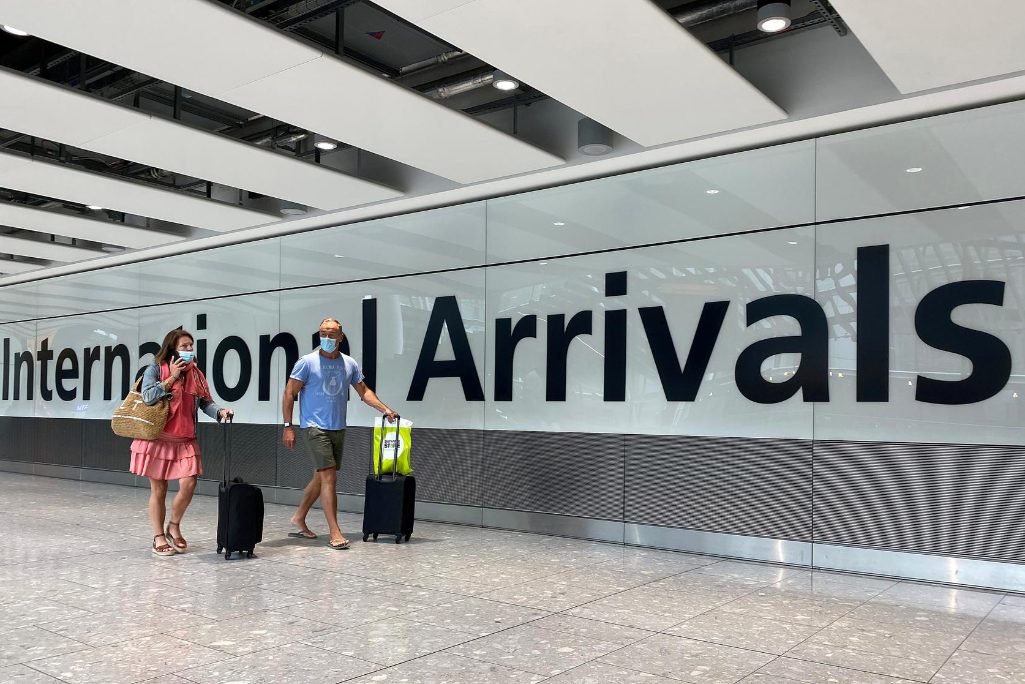How to Take a Pet Home from Bali
After rescuing an abandoned kitten in Bali, I made the decision to take her to the US with me when it was time to leave. However, to take a pet home from Bali is not a straightforward decision by any means.
First, pets are not allowed out of Bali. Yes, it is illegal to take a dog or cat off of the island.
Why?
Due to the island’s status as a high-risk rabies location, there is a ban on importing and exporting animals. It’s as simple as that.
When I discovered this, I was surprised to say the least and my heart sunk at the thought of having to leave my kitten behind.
But after I relaxed a bit, I thought to myself: There has to be a way.
Luckily, it turns out there is a way. Additional research, confirmed by some other people who had been in a similar situation, led me to the answer.
__
Here’s how to take a pet home from Bali:
Pre-trip Planning
VACCINES
Your cat or dog will need vaccines in order to travel. The specific vaccines will vary according to your final destination and the rules of the airline you will fly with. For my kitten, she needed rhinotracheitis, calicivirus, panleukopenia, chlamydia and rabies, which are all quite standard.
Keep in mind that it can take a couple of months to complete all of the vaccines as there needs to be a few weeks between shots. It’s best to start planning early.
You can expect to pay around 700,000 IDR ($50 USD) in total for all of the vaccines (at least for a kitten). Each time your pet gets a vaccine, it will be logged into a pet vaccine book, with the date, vet name, type of vaccine and the sticker from the actual vaccine bottle.
We used Sunset Vet for our kitten’s vaccines and all of her treatments. They have the best reviews by far, with locations in both Ubud and Kuta. Their prices might be slightly higher than other options but they offer professional, high-quality care. Our kitten had to be hospitalized for 6 days at one point with a muscle sprain and the vets and staff were incredible, sending us photos and video updates several times per day. And they had her back to normal quickly. I wouldn’t hesitate to recommend them at all if you want the best vet for your pet in Bali.
MICROCHIP
Your final destination may or may not require your pet to have a microchip. However, a microchip is required to complete the process of taking your pet out of Indonesia. Getting a microchip for a cat is simple. It’s one quick injection and costs approximately 450,000 IDR ($30 USD). You’ll then get a certificate with all of the cat’s details, and your details, that also proves the microchip is ISO compliant, something that is required to ensure the microchip is valid.
__
Getting Out of Bali
TRANSPORTATION AND PAPERWORK
As mentioned, it’s technically illegal for a pet to be taken out of Bali. This includes taking a pet from Bali to another island in Indonesia. However, it is perfectly legal for a pet to be taken out of Java, the neighboring island that is home to Indonesia’s capital city, Jakarta.
The main problem is how do you get the pet from Bali to Jakarta if that’s not legal?
You can’t do it yourself.
You can’t fly to Jakarta with your pet as the authorities in Bali won’t let you since it’s illegal. You can’t fly anywhere from Bali with your pet as it’s simply not allowed and you won’t be allowed to check-in.
You can’t take the ferry to Java (and then transportation to Jakarta) because the custom authorities at the ferry terminal in Java will notice and again, it’s illegal to bring the pet out of Bali. This could get you in big trouble.
So how is it possible to take a pet home from Bali?
You’ll need help. And it turns out that there are several companies that offer the help you need.
By ‘help’, here’s what these companies do:
- Transport your pet from Bali to Jakarta (takes 2-3 days via ferry and van overland)
- Obtain necessary medical certificates from a vet in Jakarta so there is no trace your pet is from Bali
- Obtain the required export permit to allow the pet out of Indonesia
- Accommodate your pet at a pet hotel in Jakarta throughout the process
- Bring the pet to you, most likely at the airport, and help you check in for your flight with all the documents
Basically, the company is getting your pet entirely new paperwork so that it appears your pet is from Java and not from Bali. Java (the island that Jakarta is on) is not a high-risk area for rabies so it’s perfectly legal to travel with a pet from this island. But the medical paperwork needs to be from this island in order to get the export permit for your pet to be allowed to leave Indonesia.
__
__
Animal Express Helps You Take Your Pet Home from Bali
The company I used to help me with this process is Animal Express. They had very good reviews, they responded right away to my initial inquiries and their price seemed reasonable for the complete service they provide.
The cost for everything I listed above came to 7,200,000 IDR (about $480 USD).
After talking with many people, this is the normal price to expect. To me, $480 USD is not terrible at all considering that they are helping you do something that’s technically impossible.
Of course, there are other options out there too. I heard about IndoAnimal Travel and while they seemed nice enough, they were slower replying to my questions than Animal Express. A few people also recommended Seventh Heaven Pet Transport but their prices are astronomical (they wanted $3200 USD for the same service) and given the decent communication I had with Animal Express, I couldn’t find any reason to pay such an amount.
*Keep in mind that I wanted to take my kitten with me in the cabin of the plane. Your situation might be a little different if you want/need to put your pet under the plane as excess baggage or ship your pet home as cargo.
__
Making a Reservation
You should start the travel process to take your pet home from Bali at least 3 weeks before you plan to fly out of Indonesia or else you risk not having everything in order or the transportation to Jakarta for your pet being already full.
Once you do confirm the service with whatever company you choose, the real process starts. They’ll first make sure you have all the proper vaccinations and documents for your pet. Then, they’ll let you know when your pet will be picked up in Bali (usually about 4 – 6 days before your flight out of Jakarta).
You might have to send your pet’s medical documents by mail to their office in Jakarta ahead of time in order to speed up the process. But this is as simple as spending 5 minutes and 22,000 IDR ($1.50) at an office of one of the local shipping services in Bali, such as JNE Express.
You’ll also need to email them your flight confirmation, and in the case of Animal Express, they will contact the airline for you to make the reservation to take your pet in the cabin with you. Once they’ve confirmed the reservation for your pet with the airline, it’s a good idea to go into your flight booking and choose an ideal seat. In my opinion, this would be a window seat so that you and your pet won’t need to deal with too much foot traffic.
If your pet needs to be checked as luggage under the plane (which is usually the case if your pet and carrying case are over 8kg or the airline you are flying with does not accept pets in the cabin) it’s best to ask about that particular procedure.
Once things are in order, you’ll pay a deposit of 50% to the company. The rest is to be paid the day you fly out of Indonesia.
__
My Experience and Timeline
As for my situation, it all went like this in the end:
- August 6th: Matcha (our kitten) was picked up in the morning at our rental house in Bali. The transport van was clean, the cages were secure and the driver was friendly and helpful. There were two dogs in the van also going to Jakarta.
- August 7th: I flew to Jakarta and checked into the Ascott Jakarta Hotel (it’s one of the few pet-friendly hotels in the city and they don’t charge extra to bring a cat or dog).
- August 8th: Matcha arrived in Jakarta in the afternoon and she was delivered to me at my hotel. Alternatively, Animal Express can keep your pet at their pet hotel until your flight.
- August 11th: A representative from Animal Express met us at the airport check-in area and helped us check in for our flight. They had all of the necessary paperwork and the process was smooth. Animal Express gave me all of the documents to take with me and off we went.
From there, it was a long journey to the US but we made it without any issues at all. And while it was a somewhat complex process to take a pet home from Bali, it’s definitely possible and just requires some patience!
__
Take a Pet Home from Bali – Important Notes:
- Not many airlines flying to/from Asia allow pets in the cabin. Turkish Airlines, Korean Airlines and Asiana were three that I found that do allow it from Jakarta to the US or Europe. There are more airlines that will allow you to check your pet as excess luggage (where it is kept in the cargo hold) but I didn’t want to attempt that with such a long journey and the young age of our kitten.
- Most airlines require your pet to be at least 10 weeks of age to fly.
- Definitely start the planning process as early as possible. It can take a couple of months to get all the vaccinations and microchip in order, as well as the transportation confirmed.
- Pet-friendly hotels in Jakarta are few and far between. Again, I stayed at the Ascott Jakarta Hotel (around $50 per night). There is also the Antoni Hotel (around $15 per night).
Hope this helps and if you have any questions, just let me know!
__
The post How to Take a Pet Home from Bali appeared first on Wandering Earl.









